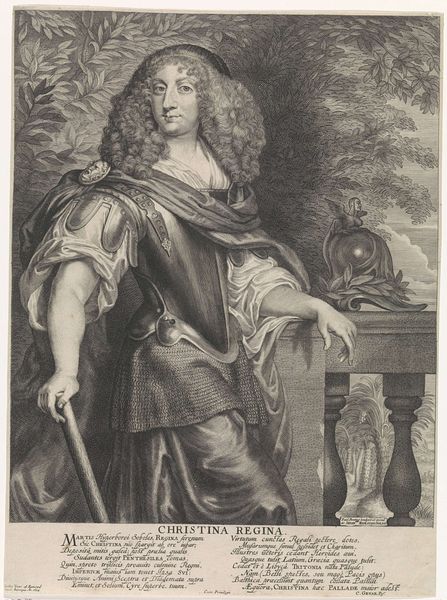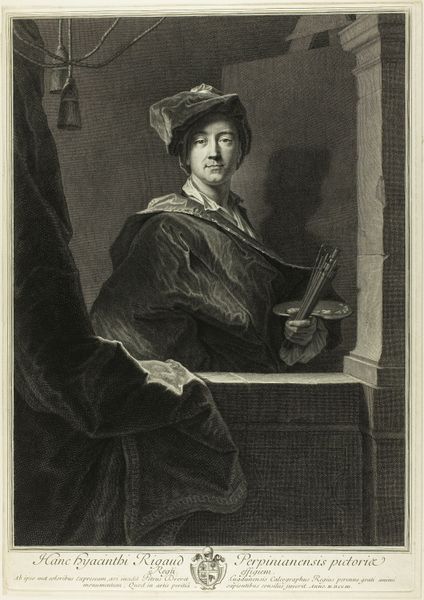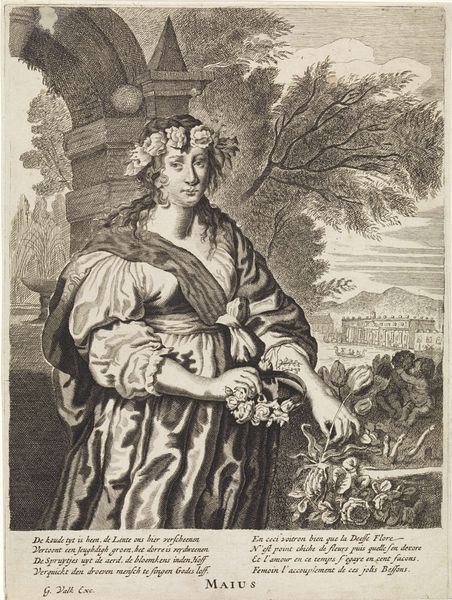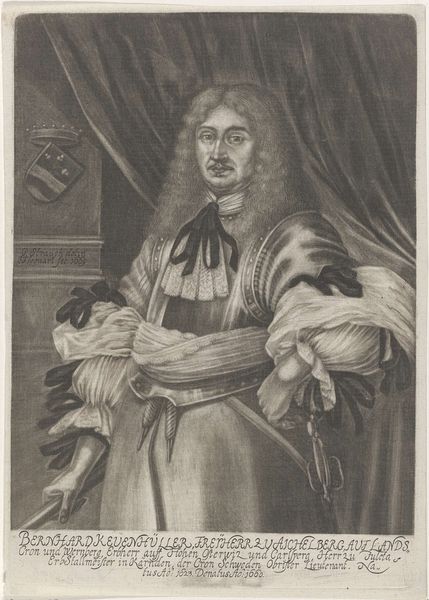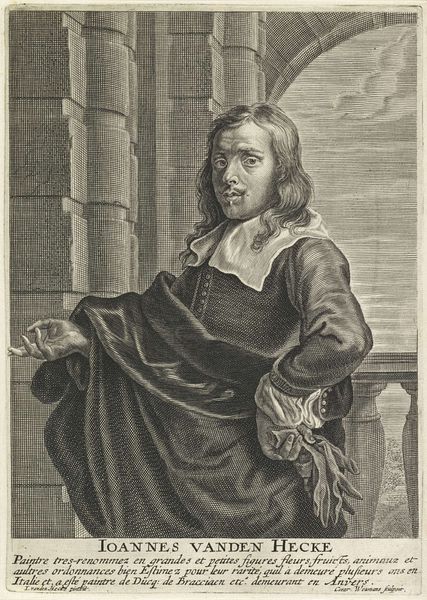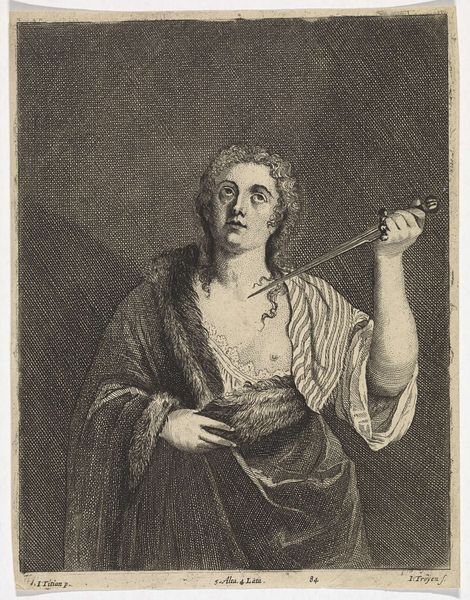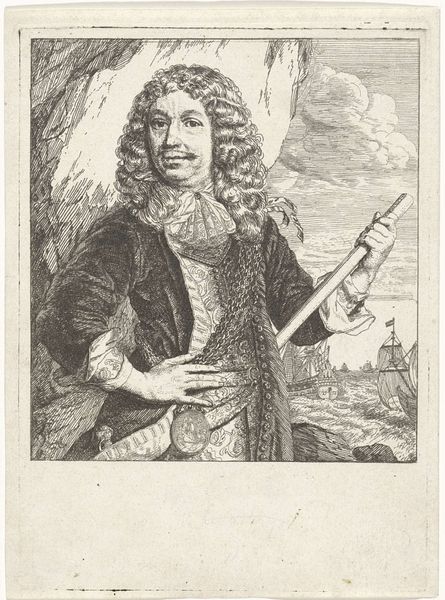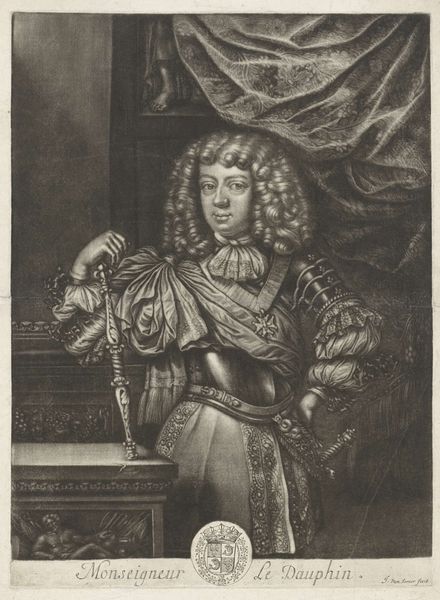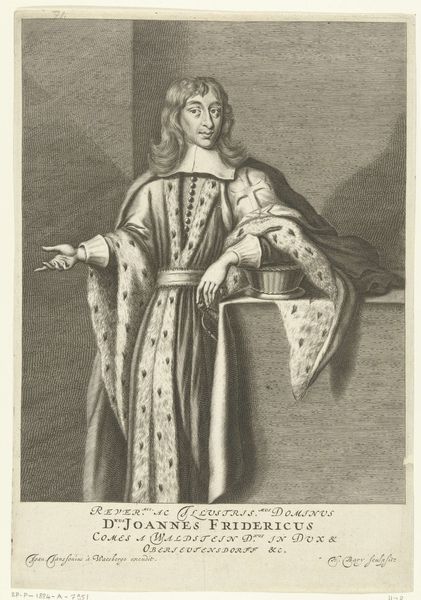
engraving
#
portrait
#
baroque
#
figuration
#
line
#
portrait drawing
#
genre-painting
#
engraving
Dimensions: height 180 mm, width 146 mm
Copyright: Rijks Museum: Open Domain
Curator: We're looking at "Lierdraaier," an engraving likely created between 1690 and 1700 by Jan Broedelet. It presents a man with a hurdy-gurdy, or a "lierdraaier" in Dutch. Editor: My immediate impression is that the image exudes a certain melancholy. The soft lines of the engraving lend themselves to a dreamy quality, a slightly world-weary air around the musician himself. Curator: It's interesting how Broedelet positions the figure. He's elevated, overlooking a landscape dotted with classical statuary. This speaks to the aspirations of genre painting during the Baroque period to be seen as a respectable art form, borrowing status from idealized settings and portraiture. Editor: And yet, his role as a street musician provides an intriguing counterpoint to the almost aristocratic setting. It invites questions about class and the accessibility of art and culture. What would music mean in this period to the classes shown within the engraving, what purpose did it serve? Curator: Street musicians existed at the margins, yet provided an important form of popular entertainment and political commentary. In a way, this engraving normalizes this marginal position. Editor: Indeed. The man’s feathered hat and elaborate robe could be read as both a signifier of status and as a costume. Where are the points where social roles blur between subject and context? How are the lines obscured, in effect? Curator: Well, engraving was key to disseminating images, contributing to a burgeoning visual culture. Broedelet, in his role as engraver, would have also played an interesting part of the art world ecosystem. This particular work demonstrates the popularization of these artistic expressions. Editor: In a way, it seems like it attempts to grant dignity to the working classes in an increasingly image-obsessed culture. It encourages discussion around the dignity and validity of labour, wouldn’t you say? Curator: Exactly. By merging idealized landscapes with genre subjects, “Lierdraaier” elevates both the artistic status of these commoners and the very perception of everyday scenes within the public eye. Editor: The intersection of these diverse components, high and low, leaves me more thoughtful about how hierarchies play out in art. The piece shows a tension between the representation of labouring figures in Baroque society and popular music within its contemporary culture. Curator: The piece, for me, truly encapsulates the aspirations of early modern art, showcasing an engagement with culture-making in a quickly transforming society. It provides insight into cultural representation during a key period in artistic innovation.
Comments
No comments
Be the first to comment and join the conversation on the ultimate creative platform.

